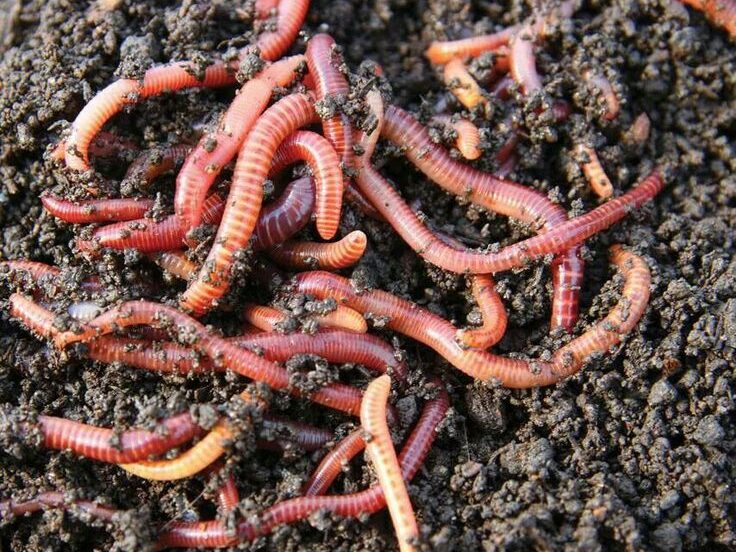Due to excessive use of chemical fertilizer, the land is becoming infertile due to extensive soil erosion. Before the use of chemical fertilizer farmers used natural alternatives such as cow dung, compost, tree leaves to improve the fertility of land. Vermicomposting is basically process of worms digesting organic matter to transform the material into a beneficial soil amendment. Vermicomposting, or worm composting, produces a rich organic soil amendment containing a diversity of plant nutrients and beneficial microorganisms.
What is Vermicomposting?

Vermicomposting is the process in which earthworms convert organic waste into high nutritional content. Vermiculture means “worm-farming”. Earthworms feed on the organic waste and give out excreta that are rich in nitrates and minerals. These are used as fertilizers and enhance soil quality.
Vermicomposting comprises two methods:
Bed Method: In this method, beds of organic matter are prepared where it is commonly used.
Pit Method: This method comprises organic matter which is collected in cemented pits. However, this method is not feasible because it involve problems as water logging.
In world there are 3000 plus species of earthworms out of which in India 500 plus species found. The length of Earthworms ranges from 3 cm to maximum 4 meter.
Benefits of Vermicompost:-
- Provide nutrients to the soil.
- Improve the water holding capacity of the soil.
- It improves the soil structure.
- Low cost and easy to make organic fertilizer
Not all worms are suitable for vermicomposting. The worms needed for composting are Eisenia fetida (redworm). These will eat its weight in garbage every day. If you give them adequate food and a good home they can double their populations every 90 days. The types of vermicomposting depends upon the production, capital cost, labour and composting structures. If you want to start vermicomposting on small-scale then farmer can harvest 5-10 tonnes of vermicompost annually. While, large scale vermicomposting can be done at commercial scale with the production of more than 50 tonnes annually.
Process for Vermicompost:-
- Select suitable site where it should be cool, moist and shady. It should be noted that earthworms are sensitive to light, so once they are exposed to sunlight they dive below the surface.
- Land should be level evenly before preparing beds.
- Size of beds varies depending on requirement, but the ideal size that should be 12*4*2 feet. The length and width can be increased or decreased depending on the availability of material but not the depth because the earthworms’ activity is confined to 2 feet depth only.
- The cow dung used for vermicomposting should be at least 15 to 20 days old, semi-decomposed, and not too wet. If its wet then earthworms will eventually dies in it.
- Cow dung and chopped dried leafy materials are mixed in the proportion and number of beds should be increased as per the availability of raw materials. Additionally, farmers can use poultry litter from poultry farming units as a nitrogen-rich input material, ensuring it’s dry and semi-decomposed before use in the beds.
- Earthworms (Eisenia fetida) should be released on the bed and after that water should be sprinkled with can immediately after the release of worms. The amount of earthworms required is nearly about 3-5 kgs, if you use more then the process of making vermicompost will be quick.
- Beds should be kept moist by sprinkling of water (daily) and by covering with gunny bags or green sheet. Do not cover vermicompost beds with plastic sheets because it may trap heat and gases.
- Bed should be turned once after 30 days for maintaining aeration and for proper decomposition. Compost gets ready within 45-50 days depending upon the number of earthworms. The turnover of the compost is 75% [the total material accommodated in the pit is 1000 kg; the out turn will be750 kg].
Harvesting:-
When raw material is completely decomposed it appears black and granular. Watering should be stopped as compost gets ready. Once the compost is ready, sieve it with a mesh to get fine, granulated vermicompost for use in the field.
Do’s for Vermicomposting:-
- Usecow dung that is 15-20 days old, semi-decomposed and not too wet.
- Keep the bed in shady, well ventilated areas.
- Maintain the proper moisture.
Don’t for Vermicomposting:-
- Don’t expose earthworms to direct sunlight or extreme heat.
- Avoid overwatering and stagnation of water particularly in high rainfall areas in rainy season.
- Do not cover vermicompost beds with plastic sheets because it may trap heat and gases.
Vermicomposting is the best alternative to chemical fertilizers. Earthworms, often called the farmer’s friends, helps to convert organic waste into vermicompost that improves soil fertility. This eco-friendly, low-cost, and sustainable method not only reduces the use of fertilizer but also promote healthy, chemical free production of crops.